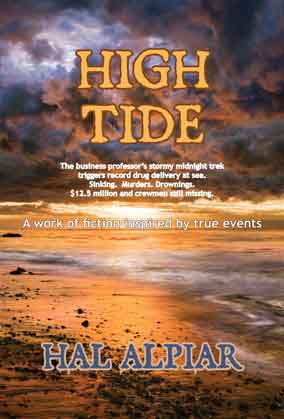Aug 26 2012
HOW to wait!
Real Entrepreneurs
Don’t Waste Time.
There are those who will undoubtedly be late for their own funerals, but they are not entrepreneurs. True entrepreneurs live to be early for everything. It’s a reflection of their eagerness and enthusiasm. It’s also a function of knowing that they only get one chance at a first impression, and don’t want to risk screwing it up just because of some lame excuse for not being on time.
Ah, but it’s not all that simple.
Most entrepreneurs, it seems, strive to
be early for appointments, presentations,
meetings, sales calls, and other events,
. . . but they don’t know HOW to wait!
They jitterbug around the lobby; fidget in line; make dumb phone calls; play games or work on puzzles; watch some locked-in, mindless network TV channel in the waiting area; strike up a conversation with the nearest fellow-waiter or the receptionist; prissy-up in the restroom; wait in the car while reading the newspaper; or sink into some nearby seat and watch the world go by.
What’s wrong with this picture? Wasted time. Instead, we can make the most of waiting time by planning for it. Well, that may be easier said than done for some, but the truth is that those who make the most of every spare minute succeed more often –and this is not to suggest being rude or antisocial about it, or not to take advantage of some no-brainer down time opportunity to relax.
It is simply a suggestion that more can be done with the thousands of hours we spend in our lifetimes, waiting. . Lawyers get paid for creating delays. Corporate people get paid for doing only what is exactly defined to be done. Government people get paid no matter what they do or don’t do. But when we run our own business, time is money. Strong productivity leads to rapid success.
And, needless to say for the benefit of those who have recently suffered the unexpected loss of a friend or family member, but worth the reminder for those who’ve been more fortunate: life can end in an instant and we only go around once in life. It’s not myth: life on earth is short indeed.
So, making the most of time because “time flies” and “time is of the essence” and “he who hesitates is lost” as my father often lectured, are all legitimate notions, but –more than that– they represent an unofficial credo for entrepreneurship and entrepreneurial pursuits. It’s all about having a sense of urgency!
Full circle around, now, leads us back to the HOW part. HOW can we make the most of waiting time? What’s that comment up above about “planning”? Let’s answer the questions with questions: How much more successful could you be if you used waiting time to make notes about a new business strategy? A new line extension? A new revenue stream? New sales opportunities?


